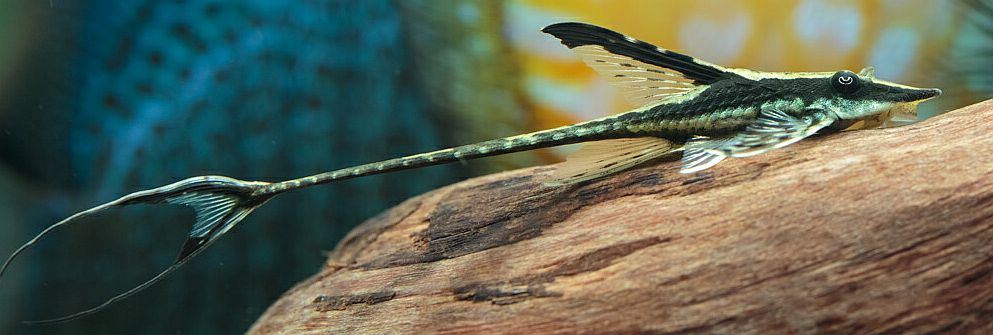

The only exceptions are male Clown Catfish. They have no problems with other fish and will often retreat at any potential sign of danger. Overall, Clown Catfish are mellow and easy-going.

When they’re not eating, the driftwood will be their safe haven. They chow down on the wood and feed off of any algae that are present. The colors are certainly eye-popping and can be a great indicator of the overall health of the fish.ĭriftwood is a must for these catfish. However, several thin stripes of yellow or orange cover the entire body. What’s unique about the Clown Catfish is its coloration. This includes a large head, downturned mouth, and expansive dorsal fin. They have that traditional catfish profile. Helming from Venezuela and Colombia, the Clown Catfish is a small species that rarely get larger than 4 inches in size. They love hiding out between driftwoods, rocks, and vegetation. Like most types of aquarium catfish, this species prefers environments rich with plants and decor. As long as the temperatures are between 70 and 77 degrees and the water is neutral, you shouldn’t encounter any problems! These are hardy fish that do well in most standard aquarium setups.

Others have more muted tones of tan and brown, but that doesn’t take away from their good looks.įor the most part, taking care of Bumblee Catfish isn’t a challenge. Many specimens have alternating body colors of bright yellow and black. Despite their small stature, these aren’t fish that blend into the background.Īptly named for the vivid stripes that run along their body, the Bumblebee Catfish is a beautiful fish species. They thrive in 20-gallon tanks with plenty of space to roam. Reaching lengths of only 3 inches, the Bumblebee Catfish is perfect for small to medium-sized tanks. They do best in waters that are between 60 and 80 degrees. The fish are very hardy and can adapt well to many environments.

While not the biggest aquarium catfish around, they still need plenty of room to swim around. They grow in large numbers, even sprouting from the top of their head!īristlenose Plecos get about 3 to 5 inches long. Perhaps the most identifying trait of the fish, these barbels are much more pronounced than they are on other catfish species. Growing from their mouths are several barbels. It creates strong suction that’s perfect for clinging onto algae-covered surfaces. Like most freshwater catfish, Bristlenose Plecos have a downturned mouth. Luckily, they are well-equipped for the job. There are a few different species included in the larger Otocinclus family. Reaching lengths of only 2 inches long, they’re tiny creatures that can do a lot to keep your tank in good shape. Lovingly referred to as “dwarf suckers” or “otos,” the Otocinclus Catfish is a popular fish in the aquarium community. Waters should be kept between 75 and 80 degrees with a pH balance of roughly 6.5 to 7.5. Most will stay in the neighborhood of 6 inches long.Ī sizable 50-gallon tank is needed to stave off stress and disease. Though, that usually only occurs when they are kept in large tanks. When mature, Striped Raphael Catfish can reach lengths up to 9.4 inches. If they’re consumed by larger fish, they can even get lodged in the predator’s throat! They are notorious for getting stuck in nets. Pair that with their rayed fins and you have the makings of a beautiful fish.ĭon’t let their docile nature fool you! These fish can do a lot of damage with their sharp fins. Thanks to their bold horizontal stripes, they can’t be missed in your tank. While they stick to the bottom of the water column like other catfish, these creatures are playful by nature and love to spend time exploring their environment.ĭespite their muted coloration, Striped Raphael Catfish stand out quite a bit. The Striped Raphael Catfish is a lively species that’s been known to put on a show. The pH balance of the water should between 6.0 and 8.0 depending on the species. They thrive in warmer waters between 70 and 80 degrees Fahrenheit. These catfish need a lush environment filled with plants and decor. This is especially true if you plan on keeping groups or creating a multi-species community tank. Though, a 20 to 30-gallon tank is preferred. Though, most will be covered in shades of brown to make camouflaging much easier.Ī 10-gallon tank is needed for smaller Cory Catfish species. In terms of color, these freshwater aquarium catfish can come in a spectrum of shades ranging from shimmering iridescent white to dark black. They’re quite hardy and don’t get very large at all, making them an excellent choice for novice and seasoned aquarists alike.Īppearance can vary dramatically across the species, but most will only get to be between 1 and 4 inches long. For the most part, Cory Catfish are easy to care for.


 0 kommentar(er)
0 kommentar(er)
